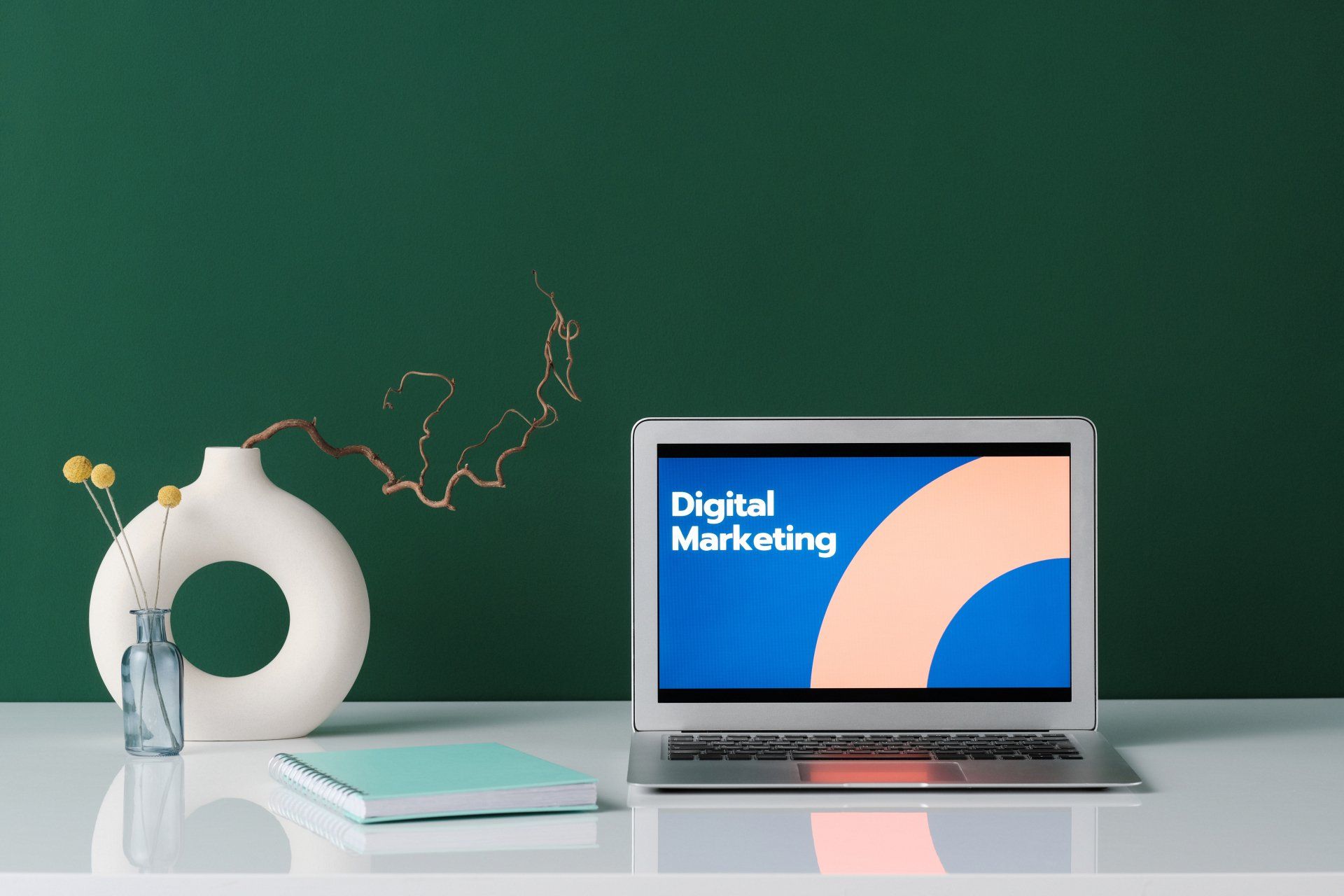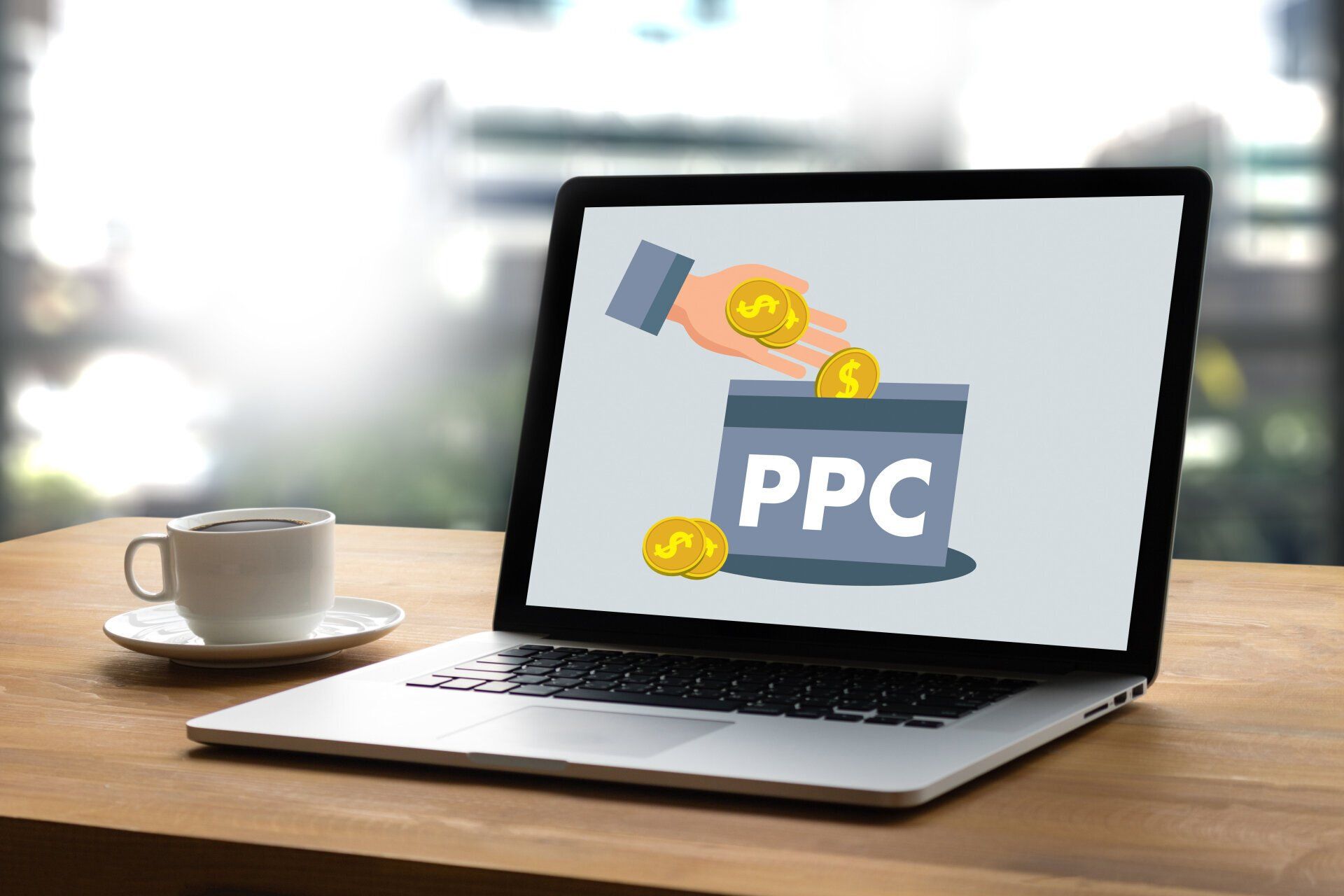Effective Lead Generation Strategy for Home Services
The Power of Lead Generation
Introduction:
In the dynamic world of home services marketing, effective lead generation is the key to unlocking unparalleled success. This blog explores seven invaluable tips to help your plumbing business not just survive, but thrive, by consistently attracting quality leads.
Step 1: Know Your Ideal Customer
To generate quality leads, you must first intimately know your ideal customer. Develop detailed buyer personas that encapsulate demographics, interests, and pain points. This clarity becomes your roadmap for crafting high-quality campaigns that resonate with your target audience.
The Foundation of Quality Leads:
Generating quality leads isn't a shot in the dark; it's an intentional process rooted in understanding your ideal customer. Before crafting campaigns, you must have a crystal-clear picture of who you are targeting.
Create Detailed Buyer Personas:
The journey begins with the creation of detailed buyer personas. These are semi-fictional representations of your ideal customers, comprising demographics, interests, behaviors, and pain points. Dive deep into understanding who they are, what they value, and the challenges they face.
Demographics Matter:
Start by outlining the demographics of your ideal customer. Age, gender, location, occupation—these are the building blocks that help you narrow down your target audience. Understanding these basic characteristics is essential for tailoring your campaigns effectively.
Explore Interests and Hobbies:
Beyond demographics, delve into the interests and hobbies that define your ideal customer. What are their passions? What content do they consume? Knowing these nuances allows you to create campaigns that resonate on a personal level.
Identify Pain Points:
Your ideal customer isn't just defined by their likes; their pain points are equally crucial. What challenges do they face in the context of plumbing services? Identifying these pain points provides the foundation for crafting messaging that offers solutions.
Clarity as Your Roadmap:
The buyer personas you create serve as your roadmap. They guide your marketing efforts, ensuring that every campaign is tailored to speak directly to the needs and preferences of your ideal customer. This clarity is the linchpin of high-quality, targeted campaigns.
Crafting High-Quality Campaigns:
Armed with a deep understanding of your ideal customer, crafting high-quality campaigns becomes a strategic endeavor. Your messaging, content, and approach align seamlessly with what resonates most with your audience, maximizing the impact of your marketing efforts.
Step 2: Optimize Your Website for Conversions
Your website serves as the initial point of contact for potential customers. Optimize it for conversions by creating clear calls to action (CTAs), user-friendly navigation, and compelling landing pages. Ensure that every click has a purpose and guides visitors closer to becoming leads.
The Significance of Your Website:
Your website is more than an online presence; it's the initial handshake between your business and potential customers. Optimizing it for conversions ensures that this first interaction leaves a lasting impression.
Create Clear Calls to Action (CTAs):
Every page on your website should guide visitors toward a specific action. Whether it's scheduling a service, requesting a quote, or signing up for updates, incorporate clear calls to action (CTAs). Make them prominent, compelling, and aligned with the needs of your audience.
User-Friendly Navigation:
A user-friendly website is a cornerstone of conversion optimization. Ensure that navigation is intuitive and straightforward. Visitors should easily find the information they're looking for, whether it's details about your services, pricing, or contact information.
Compelling Landing Pages:
Landing pages are the gateways to conversions. Create dedicated landing pages for specific services or promotions. Keep them focused, with concise and persuasive content. A well-crafted landing page increases the likelihood of visitors taking the desired action.
Optimize Page Load Speed:
In the fast-paced online world, page load speed matters. Optimize your website's performance to ensure swift loading times. A slow website can deter potential customers, affecting both user experience and search engine rankings.
Mobile Optimization:
With a significant portion of internet users accessing websites through mobile devices, mobile optimization is non-negotiable. Ensure that your website is responsive and provides an equally seamless experience on smartphones and tablets.
Incorporate Trust-Building Elements:
Build trust with your audience by incorporating trust-building elements on your website. Display customer testimonials, showcase industry certifications, and provide clear contact information. A trustworthy website is more likely to convert visitors into customers.
Regularly Update and Improve:
Your website is a dynamic entity that should evolve with your business and industry trends. Regularly update content, refresh visuals, and implement improvements based on user feedback and analytics. An up-to-date website reflects a proactive and reliable business.
Step 3: Harness the Power of SEO
Invest in the long-term benefits of search engine optimization (SEO). By optimizing your website for search engines, you increase the likelihood of ranking higher in search results. Focus on local SEO strategies to attract geographically relevant leads actively seeking your services.
Understanding the SEO Landscape:
Search Engine Optimization (SEO) is the cornerstone of online visibility. It involves optimizing your website to rank higher in search engine results, making it more accessible to potential customers actively searching for plumbing services.
Keyword Research:
Start by conducting thorough keyword research to identify terms and phrases relevant to your plumbing business. These are the words potential customers are likely to use when seeking services like yours. Integrate these keywords strategically into your website content.
Optimize On-Page Elements:
Maximize on-page SEO elements by optimizing title tags, meta descriptions, and headers. These elements provide search engines with valuable information about the content of each page, influencing how your site appears in search results.
Create Quality, Relevant Content:
Content is a driving force in SEO. Craft quality, relevant content that addresses the needs and queries of your target audience. Regularly update your website with informative blog posts, service pages, and other content that showcases your expertise in the plumbing industry.
Build Quality Backlinks:
Backlinks, or links from other reputable websites to yours, contribute significantly to SEO. Seek opportunities to build quality backlinks through partnerships, guest posting, and participation in industry forums. The more authoritative websites link to yours, the more search engines recognize your site's credibility.
Improve Website Loading Speed:
Page loading speed is a crucial factor in SEO rankings. Optimize images, leverage browser caching, and implement other strategies to enhance your website's loading speed. A faster website not only improves user experience but also positively influences search engine rankings.
Mobile Optimization:
With an increasing number of users accessing the internet on mobile devices, mobile optimization is paramount for SEO success. Ensure your website is responsive and provides a seamless experience on smartphones and tablets.
Regularly Monitor and Adjust:
SEO is an ongoing process. Regularly monitor your website's performance using analytics tools. Analyze key metrics such as organic traffic, keyword rankings, and user engagement. Adjust your SEO strategy based on data to stay ahead in search engine rankings.
Step 4: Content Is Your Secret Weapon
High-quality content acts as a magnet for leads. Establish a blog that addresses common plumbing issues, provides DIY tips, and showcases your expertise. By offering valuable insights, you position yourself as an authority in the field and attract leads actively seeking your solutions.
Elevate Your Brand with Compelling Content:
Content isn't just information; it's the narrative that shapes your brand. Craft compelling content that not only informs but resonates with your audience. Elevate your brand by showcasing expertise, addressing customer pain points, and communicating a unique value proposition.
Educate and Build Trust:
Use your content as a tool for education. Share valuable insights, industry knowledge, and tips that empower your audience. When you position your business as a source of reliable information, you build trust—a critical foundation for long-term customer relationships.
Diversify Your Content Types:
The content landscape is diverse, and catering to different preferences enhances your reach. Explore various content types, including blog posts, informative videos, engaging infographics, and podcasts. Diversifying your content arsenal ensures you capture the attention of a broader audience.
Align Content with Audience Segments:
Leverage the buyer personas created in Tip #1 to align your content with specific audience segments. Tailor your messaging to address the unique needs, preferences, and challenges of each segment. This targeted approach enhances the relevance of your content, making it more impactful.
Consistency is Key:
Consistency in content creation is a powerful force. Establish a regular posting schedule to keep your audience engaged and informed. Whether it's weekly blog posts, monthly newsletters, or a steady stream of social media updates, consistency reinforces your brand presence.
Engage Through Storytelling:
Storytelling is a potent tool in content creation. Share success stories, behind-the-scenes glimpses, and narratives that humanize your brand. Engage your audience emotionally, creating a connection that goes beyond the transactional.
SEO-Optimized Content:
Infuse your content with strategic SEO elements. Integrate relevant keywords, optimize meta tags, and focus on creating content that answers common search queries. This not only enhances your online visibility but also positions your business as an authoritative voice in the industry.
Encourage Audience Interaction:
Foster a sense of community around your content by encouraging audience interaction. Invite comments, conduct polls, and respond to inquiries. When your audience actively engages with your content, it becomes a two-way conversation, strengthening the bond between your brand and customers.
Step 5: Social Proof and Reviews
Your reputation is a powerful force in lead generation. Encourage satisfied customers to leave positive reviews and testimonials. Social proof builds trust, attracting leads who are confident in the quality of your services.
The Power of Social Proof:
Social proof is the psychological phenomenon where people tend to follow the actions of others, assuming those actions to be correct. Leverage this power by showcasing positive experiences and testimonials from satisfied customers. Whether it's on your website, social media, or marketing collateral, social proof builds credibility.
Encourage Customer Reviews:
Actively encourage your satisfied customers to leave reviews on platforms like Google, Yelp, and your website. Positive reviews serve as a public endorsement of your services and contribute significantly to your online reputation. Make the process easy and seamless for customers to share their experiences.
Showcase Testimonials:
Testimonials offer a personalized touch to your marketing efforts. Showcase quotes or stories from satisfied customers on your website, promotional materials, and social media. This firsthand validation resonates with potential customers and provides a human touch to your plumbing services.
Feature Before-and-After Success Stories:
Visual storytelling is a potent form of social proof. Feature before-and-after success stories that highlight the transformative impact of your plumbing services. Whether it's fixing a leak, remodeling a bathroom, or implementing energy-efficient solutions, visual evidence speaks volumes.
Utilize Social Media Platforms:
Social media is a dynamic arena for social proof. Share customer reviews, testimonials, and success stories on your social media platforms. Encourage happy customers to tag your business in their posts or share their positive experiences. This not only amplifies your reach but also engages your audience.
Create a Dedicated Testimonials Page:
Enhance the visibility of social proof on your website by creating a dedicated testimonials page. Consolidate positive reviews, testimonials, and case studies in one easily accessible location. This not only builds trust but serves as a valuable resource for potential customers researching your services.
Respond Thoughtfully to Feedback:
Actively engage with customer feedback, both positive and constructive. Respond thoughtfully to reviews, thanking customers for positive experiences and addressing concerns in a professional manner. Transparent and responsive communication further builds trust in your brand.
Incorporate Trust Badges:
Display trust badges prominently on your website, showcasing affiliations with industry organizations, certifications, and awards. These badges act as visual cues of your credibility and contribute to the overall social proof supporting your plumbing business.
Step 6: Embrace Email Marketing
Email marketing is a potent lead nurturing tool. Create a targeted email list and engage leads with valuable content, offers, and updates. Don't underestimate the power of a well-crafted email campaign to convert leads into paying customers.
The Personal Touch of Email:
Email marketing provides a direct and personal channel to connect with your audience. In a cluttered digital space, an email lands directly in your customer's inbox, offering a personalized touch that fosters a sense of exclusivity and importance.
Build and Nurture Your Email List:
Start by building a robust email list comprised of individuals genuinely interested in your plumbing services. Use website sign-up forms, promotions, and exclusive content offerings to entice visitors to subscribe. A quality email list is the foundation of successful email marketing.
Segmentation for Targeted Communication:
Embrace segmentation to tailor your email communications. Segment your audience based on factors like location, interests, or past interactions. This targeted approach allows you to send content that resonates with specific segments, maximizing the relevance of your messages.
Craft Compelling and Valuable Content:
Content is king in email marketing. Craft compelling, valuable content that speaks directly to the needs and interests of your audience. Whether it's informative newsletters, exclusive promotions, or tips for plumbing maintenance, your content should provide real value.
Engage with Automated Campaigns:
Leverage the power of automation in your email campaigns. Set up automated drip campaigns for new subscribers, follow-ups after service requests, or seasonal promotions. Automation ensures timely and consistent communication without the need for manual intervention.
Encourage Interaction with Calls to Action:
Every email should guide recipients toward a specific action. Whether it's scheduling a service, downloading a guide, or accessing an exclusive offer, incorporate clear and compelling calls to action (CTAs). Encouraging interaction strengthens the impact of your email campaigns.
Optimize for Mobile Devices:
With a significant portion of email opens happening on mobile devices, ensure that your email campaigns are optimized for smaller screens. Responsive design and concise, visually appealing content contribute to a seamless mobile experience.
Measure and Analyze Campaign Performance:
Implement tracking mechanisms and analytics tools to measure the performance of your email campaigns. Analyze metrics such as open rates, click-through rates, and conversion rates. This data-driven approach allows you to refine your strategy for optimal results.
Step 7: Nurture and Qualify Leads
Lead generation is an ongoing process. Implement a lead nurturing strategy to guide potential customers through the decision-making process. Provide the information and support they need to make informed choices. As leads progress, qualify them to focus your resources on the most promising prospects.
Understanding the Lead Lifecycle:
Successful lead management begins with understanding the lead lifecycle. Recognize that not every prospect is ready to convert immediately. The journey from initial interest to becoming a satisfied customer involves stages, and each stage requires a tailored approach.
Capture Leads Strategically:
Employ strategic methods to capture leads at various touchpoints. Whether through website sign-ups, inquiry forms, or special promotions, ensure that your capture methods align with the preferences and behaviors of your audience. This ensures a steady influx of potential customers.
Implement Lead Scoring:
Lead scoring is the compass that guides you in identifying the most promising leads. Assign values to different interactions and behaviors, such as website visits, engagement with emails, or requests for information. This allows you to prioritize and focus efforts on leads exhibiting higher conversion potential.
Personalized Lead Nurturing Campaigns:
Tailor your lead nurturing campaigns based on the identified stages of the lead lifecycle. Provide valuable content that addresses the specific needs and concerns of leads at each stage. Personalized nurturing builds trust, keeping your plumbing services top-of-mind as leads progress.
Utilize Drip Campaigns:
Drip campaigns are a valuable tool in lead nurturing. Automate a series of targeted emails that gradually guide leads through the conversion journey. From informative content to exclusive offers, drip campaigns provide a consistent and systematic approach to nurturing leads.
Engage Through Multiple Channels:
Diversify your lead nurturing channels beyond email. Engage leads through social media, webinars, and other platforms that align with their preferences. A multi-channel approach ensures that your messages resonate across various touchpoints, reinforcing your brand presence.
Leverage Customer Relationship Management (CRM) Systems:
Implement a robust CRM system to centralize lead information and interactions. CRM systems provide a comprehensive view of each lead's journey, facilitating personalized interactions, and enabling your team to respond promptly and effectively.
Regularly Qualify and Requalify Leads:
The lead qualification process is not static; it's a dynamic cycle. Regularly evaluate and requalify leads based on their interactions, changing behaviors, and evolving needs. This ensures that your efforts are consistently focused on leads with the highest likelihood of conversion.
Conclusion:
Effective lead generation is the backbone of a successful plumbing company’s marketing strategy. If you're not already applying these strategies, the time to start is now. Feel free to reach out if you have any questions or need further guidance on how to supercharge your lead generation efforts. I'm here to help you achieve exceptional results in your plumbing business. Here's to a steady stream of quality leads!










